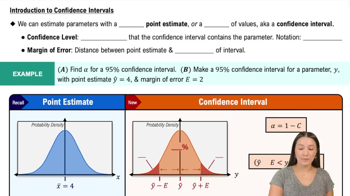Here are the essential concepts you must grasp in order to answer the question correctly.
Sampling Technique
The sampling technique refers to the method used to select a subset of individuals or observations from a larger population. In this case, the technique used is stratified sampling, where the 48-acre field is divided into one-acre subplots, and a sample is taken from each subplot. This approach ensures that each section of the field is represented in the sample, which can lead to more accurate estimates of the overall harvest.
Recommended video:
Sampling Distribution of Sample Proportion
Bias in Sampling
Bias in sampling occurs when certain members of a population are systematically more likely to be selected than others, leading to an inaccurate representation of the population. Potential sources of bias in this scenario could include variations in soil quality or moisture levels across the subplots, which might affect the yield but are not accounted for if the sampling does not consider these factors.
Recommended video:
Sampling Distribution of Sample Proportion
Estimation of Harvest
Estimation of harvest involves using sample data to make inferences about the total yield of the entire field. By analyzing the yields from the sampled subplots, one can extrapolate to estimate the total harvest. However, the accuracy of this estimation depends on the sampling technique and the absence of bias, as any skewed data can lead to incorrect conclusions about the overall productivity of the field.
Recommended video:
Introduction to Confidence Intervals





